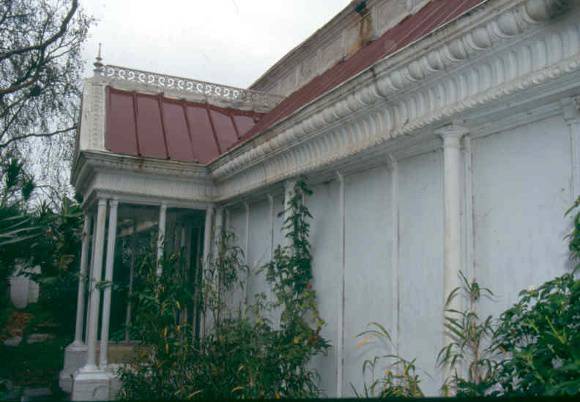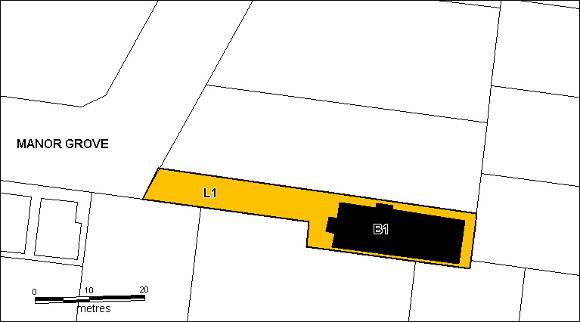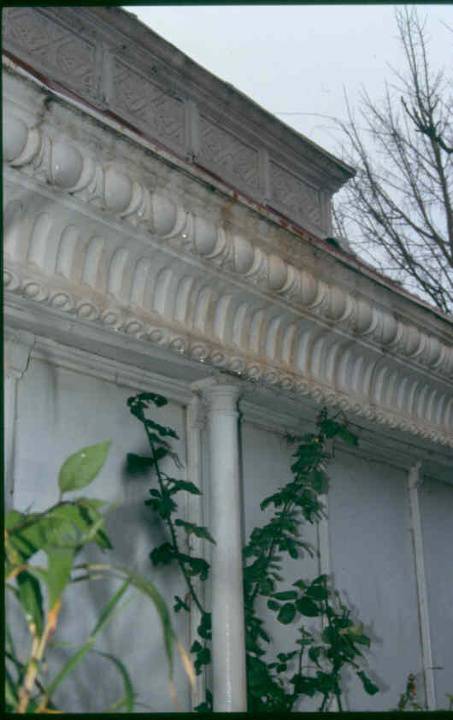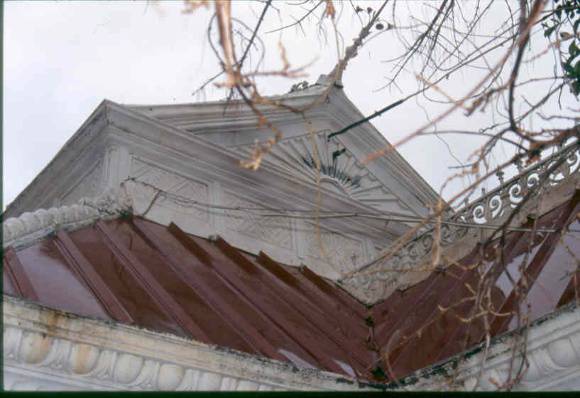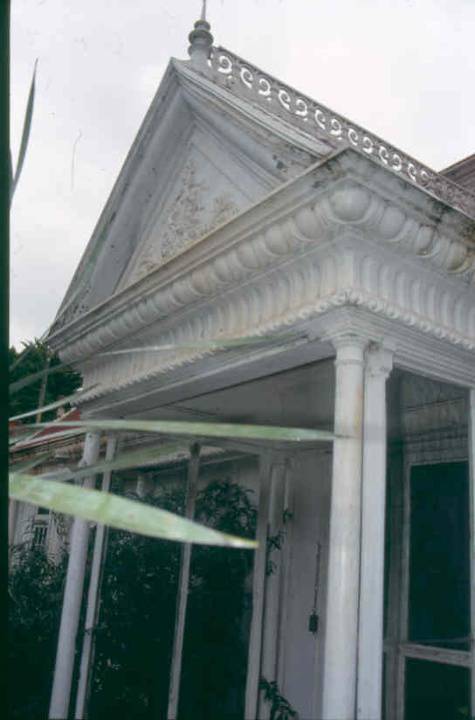| Back to search results » | Back to search page » |
|
FORMER LABASSA CONSERVATORY
Location21 MANOR GROVE CAULFIELD, GLEN EIRA CITY
File NumberHER/2002/000106LevelRegistered |
|
Statement of Significance
What is significant?
Around 1917 the glass house from 'Labassa', Caulfield was offered for
sale to Malvern Council for its own gardens but the offer was
declined. Following subdivision of the Labassa estate in the 1920s the
conservatory was converted into a residence. The structure has a simple rectangular plan, with a brick base and
superstructure of cast iron columns and roof trusses. The hipped roof
is surmounted by an elaborately decorated gable structure. Most of the
original glass has been replaced by metal sheeting. The decoration
comprises pressed metal fascias including an egg and dart style
cornice moulding, mullion mouldings and gable end panels with a rising
sun motif. Cast iron ridgework and finials add to the lively roof
form. Internally the floor appears to have been raised as part of the
conversion work to a residence, and stained timber panelling
introduced to provide room spaces. Boilers probably heated the
conservatory in the colder months, but these do not survive.
How is it significant?
Why is it significant?
The former Labassa conservatory is architecturally significant as a
rare example of a building type. Many Victorian mansion houses had
attached conservatories, but detached conservatories were much less
common. The only other detached example associated with a residence
known to survive on its original site in Victoria is an earlier
example at Warrock homestead, near Casterton. Conservatories attached
to nineteenth century mansions are far more numerous. The Labassa
example is very ornate, and its decoration draws on the versatility of
pressed metal and cast iron. Thishighlights the dual purpose of the
conservatory, as both a functional structure and a picturesque
building on the Labassa estate. This building is unusual as an example
converted to residential use.
The former Labassa Conservatory is believed to have been built as
part of the extensive reworking of the Labassa estate in c1890 for the
new owner Alexander Robertson, proprietor of the Cobb and Co line.
Robertson commissioned the architect JAB Koch to remodel the house,
and Koch may have been responsible for the conservatory as well.
Alternatively, the conservatory may have been imported. The gates
installed at Labassa in 1890 were manufactured by the MacFarlane
foundry of Glasgow, Scotland, a firm known to have manufactured
conservatories.
The former Labassa Conservatory is of historical and architectural
significance to the State of Victoria.
The former Labassa Conservatory is historically significant for
its associations with the Labassa estate. Subdivision of the estate
separated a number of outbuildings from the mansion. The former
conservatory is significant as part of the large scale improvements
carried out to the estate in the 1890s. The nineteenth century was the
great age of conservatory designs, enabled by technological
developments in heating, glazing and iron. Whilst conservatories were
common in botanical gardens and universities, where they were
primarily used for cultivating, studying, and experimenting with
plants, they had also become an accessory of the wealthy on private
estates.
Group
Parks, Gardens and Trees
Category
Conservatory


